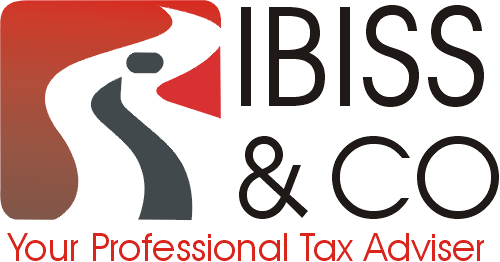Every industry has its jargon that experts are very well aware of. It’s an indication of a person’s familiarity and expertise in the field and is the gateway to a successful dive into the career.
If you want to pursue a career in accounting, getting hold of the vocabulary and familiarizing yourself with a few of the most commonly-used accounting abbreviations, acronyms, and words is essential.
However, the secret lingo, various accounting fallacies, and muddled credentials often make people sceptical about getting into the accounting industry. It creates a perception that the accounting field is out of your reach when it’s just a matter of learning a new language.
Knowing how to talk with the industry experts will help you have a firm grip on the game. Learning the basics can also help you communicate more effectively with your accounting team. It’s a win-win situation to have a better hold on the basic terms for you.
It’s time to pull up your socks and up your accounting terminology game. This blog lists basic financial terminology and phrases essential for a beginner.
1. Accountant’s Report
People often misunderstand an accountant’s report as the result of an audit. That’s not true. It’s a financial document prepared by your accountant that has attestation reports, compilation reports, and reports for agreed-upon procedures, review reports, and financial statements.
2. Accountant
An accountant is a professional trained to record and report financial activities. The worker may be required to have certifications to verify their expertise and knowledge, depending on the firm’s requirements.
3. Accounting Period
The period for which a firm does financial reporting and generates reports is called the accounting period. It can be monthly, quarterly, or annually.
4. Accounts Payable (AP)
Accounts Payable is a list of expenses that a company has incurred but not paid. It’s a debt to the corporation. Therefore, the balance sheet shows it as a liability. For example, paying the employees after having them work for you for a month is accounts payable.
5. Accounts Receivable (AR)
Accounts receivable is the balance sheet category that includes all sales that have produced revenue but haven’t been paid for. It’s shown as an asset that’ll most likely convert to cash shortly. For example, your company gives services and gets paid by the end of the month.

6. Bank Statement
A bank statement is a monthly report that a bank provides to an account holder that shows the account’s monthly balance. It displays all withdrawals and deposits made to the account during the month and the account’s final amount at the end of the month.
7. Balance Sheet (BS)
A balance sheet is a financial statement that lists all of a company’s equity (owner’s equity and shareholders), debt to the company (liabilities), and possessions of the company (assets). The formula is as follows: asset + liabilities + equity. It’s the most used financial statement by accountants and accounting departments and provides a clear-cut image of the company’s worth.
8. Auditors
Auditors are specialists who examine the authenticity of a company’s financial records, reports, and accounts to determine its financial position. A company employs an auditor to evaluate its financial documents to ensure legitimacy and reliability for shareholders.
9. Asset (A)
Any company holding with some monetary value is an asset. For example, advance payments, inventory, and equipment are assets for a business. It can help improve sales, generate cash flow, and reduce expenses. There are four types of assets: liquid, current, fixed, and prepaid expenses.
10. Accrual
Any revenue or expense that has been incurred but not yet recorded is accrual.
11. Allocation
Allocating funds to different business activities or financial periods is allocation. For example, a clothing brand giving out a portion of the budget for advertising is allocating funds for advertising.

12. Cost of Goods Sold (COGS)
The cost of goods sold is a phrase that refers to the costs of producing goods or services that your company offers. These are the direct costs associated with production. Subtracting COGS from revenue gives the gross profit for your firm.
13. Liquidity
Liquidity is a significant characteristic to consider when evaluating a company’s financial status. It’s the assets you can quickly convert to cash and the hard money you have on hand to pay off your short-term debt.
It aids in determining financial stability because a company that struggles to satisfy short-term obligations may not be able to survive in the long run. It is calculated using a quick ratio. If your quick ratio is less than one, your current liabilities exceed your current ability to pay.
14. Credit
Credit is an accounting entry documented on the right hand of a balance sheet. It’s an increase in the equity or liability account or a decrease in the expense or asset account.
15. Debit
A debit is an accounting entry documented on the left side of a balance sheet. It represents an increase in the expense or asset account or a decrease in the equity or liability account. For example, when a business pays in cash to its employees, there’s a decrease in assets representing credit and an increase in the expense representing debit. Remember, every credit will always have an equal debit to balance the record, thus named balance sheet.
16. Budgeting
Budgeting is a process of managing cash flows by designing, implementing, and monitoring a financial plan. It gives an idea of the amount you have in hand for any business activity. For example, budgeting for advertising means dividing a certain amount of money efficiently to advertise and promote the good or service successfully.
17. Book Value
The actual value minus any liabilities or depreciation of an entity represents its book value. It demonstrates how a commodity depreciates over time.
For example, a company has assets worth 200 million pounds and has 100 million pounds as liabilities. Therefore, the book value of the firm is 100 million pounds.

18. Cash Flow
Cash flow is the income or expense that a firm anticipates generating from its business operations over a given period. Net cash flow is the total amount of money a company makes by lending, investing, and business operations.
19. Closing the Books
Closing the books refers to zeroing out or closing a company’s income summary, expense, and revenue reports. It’s done by professionals towards the end of the year, marking the beginning of a new fiscal year.
20. Solvency
Solvency refers to a company’s ability to satisfy its long-term financial obligations. A company’s ability to meet short-term debts does not guarantee that it will be able to meet long-term obligations. Solvency ratios help assess a company’s long-term debt to its equity or assets in this situation.
21. Certified Public Accountant (CPA)
A Certified Public Accountant (CPA) is a finance and accounting expert who has earned a bachelor’s degree in accounting from a reputable institution and is a member of the Certified Public Accountants Association (CPAA). A CPA is authorized to sign tax returns and audit companies.
22. Depreciation
Depreciation is the gradual loss of an asset’s value with time. It’s a non-cash cost recorded as an expense on the income statement. In general, the commodity must have significant worth to depreciate. Common examples of assets that depreciate include equipment and automobiles.

23. Equity
Assets minus liabilities equal equity. The percentage of shares that indicates an individual’s ownership interest in a firm is the owners’ equity. Shareholders and business owners are the owners of equity.
24. Liabilities
Liabilities are something a company owes, usually money to other parties. Business liabilities can be further divided into two broad categories: current and long-term liabilities. Current liabilities are amounts that are due within twelve months.
These include a business’s accounts payable, accrued expenses, and other short-term debts. Long-term liabilities include items that are due after twelve months. Any loans from external parties or current shareholders for the long-term are included in this section
25. Expense
The amount spent to carry out a business operation is an expense for the company. For example, purchasing raw materials for production, paying out employees, and transportation costs in shifting the final good from warehouses to retail stores are all expenses for a company.
26. Fixed Asset
A fixed asset is an asset that a corporation has had for more than ten years. For example, equipment, building, automobiles, etc.
27. Diversification
Diversification is an investing strategy that spreads an individual’s or company’s wealth across a variety of assets to reduce risk. A diverse portfolio of investments and assets reduces the risk of a particular item in danger. Individual asset performance will no longer put your investments in jeopardy.
For instance, investors diversify the risk by purchasing treasury bills, bonds, stocks, and real estate, so that if one doesn’t perform well, the other can help make up for the loss.
28. Gross Margins
It represents the final profits of a company after subtracting the cost of goods sold. Let’s suppose a company has a gross margin of 50%. It means for each dollar of sales generated, 50 cents was the profit made.
29. Income Statement
The most typical financial statement is an income statement, which measures a company’s financial performance annually, quarterly, or monthly.
It depicts the company’s entire expenses and revenue, including non-cash accounting such as amortisation and depreciation. It evaluates the money earned, spent, and profit or loss incurred to determine a company’s success.
The profit or loss on the income statement, also called net burn or net profit, is then used to calculate cash flow from operations. The first line item on the cash flow statement is the net burn or net profit.

30. Inflation
Inflation is the gradual increase in the price of goods and services. For example, a basic Ford Cortina cost 963 pounds in 1972, but now a Ford car starts from 22,965 pounds.
31. Dividends
Dividends are gains distributed to shareholders of a corporation. They can be in the form of real estate, stock shares, and cash payments. For example, a company has a successful year, so it announces a two-pound dividend per share. Mary receives four hundred pounds as dividends as she owns two hundred company shares.
32. Generally Accepted Accounting Principles (GAAP)
The guidelines that accountants must follow while doing their tasks are known as generally accepted accounting principles (GAAP). These principles establish a consistent framework for evaluating a company’s financial statements.
33. General Ledger
A general ledger is a comprehensive record of a company’s financial transactions across its lifetime. The transactions are then divided into separate sub-ledger accounts as per the company rules.
34. Cash Flow Statement
A cash flow statement can be annual, quarterly, or monthly. It displays all of your company’s outflows and inflows over time.
All changes to the balance sheet and current operational results, such as accounts receivable and payable, are included. Amortization and depreciation are examples of non-cash accounting items that aren’t included in business cash flow statements.
A cash flow statement is a financial statement that shows a company’s short-term liquidity, viability, and capacity to repay its debts.

Looking for reliable personal tax advisors and accountants in the UK? Rest assured, you’ve come to the right place. IBISS & CO has some of the best accountants and chartered tax advisers in Walsall who’ll provide you with multiple accounting and taxing services for your business.
Our team of experts will work closely with you in organising your taxes and managing your accounts, ensuring that the self-assessment tax returns and audits are completed in a timely fashion.
We’re known for providing high-quality accounting services and have become the go-to company for many businesses in Walsall. Our cost-effective packages, considerable expertise, and experience have helped u sbecome a reliable financial service provider across the UK.
Our team of expert chartered accounts and business advisors in the UK has significant experience dealing with complex accounting matters.
Contact us today for more information.




